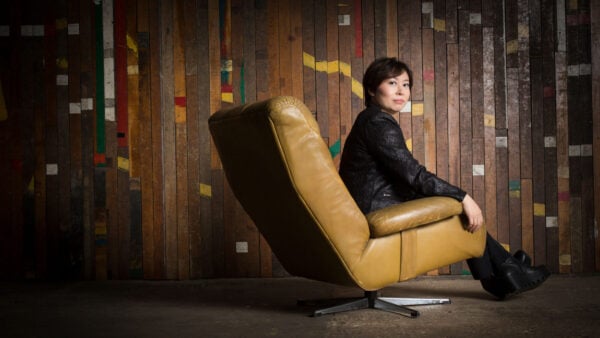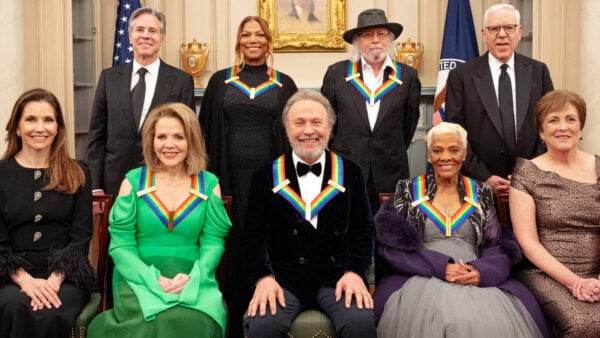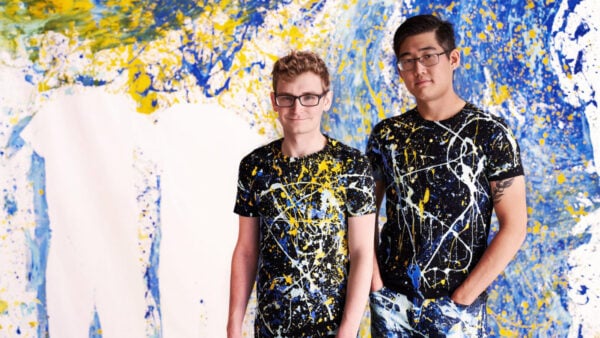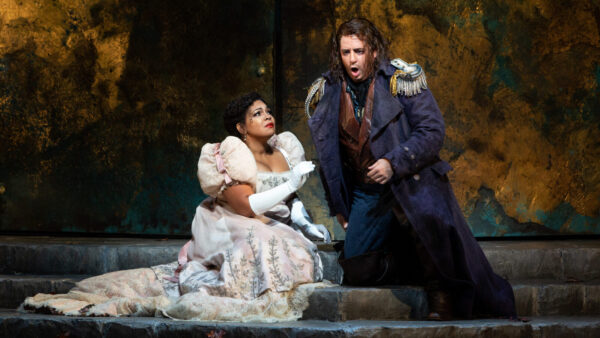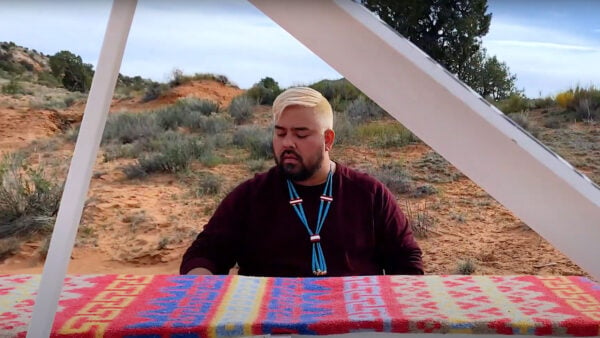The 9th Chicago Dancing Festival presented its first-ever Modern Women program, highlighting the important contributions of women in dance both past and present: Isadora Duncan, Martha Graham, Kate Weare, Pam Tanowitz, and Crystal Pite. Modern Women featured the companies that each of these women founded (with the exception of Crystal Pite, whose A Picture of You Falling was performed by Hubbard Street Dance Chicago, instead of her own ensemble Kidd Pivot).
We spoke with women from each of the five companies on the program about women’s roles in dance, both as dancers and as choreographers. Each offered different perspectives on these complex issues, though there was a consensus that the roles of women in ballet and modern dance are drastically different.
Lori Belilove, Lori Belilove & The Isadora Duncan Dance Company
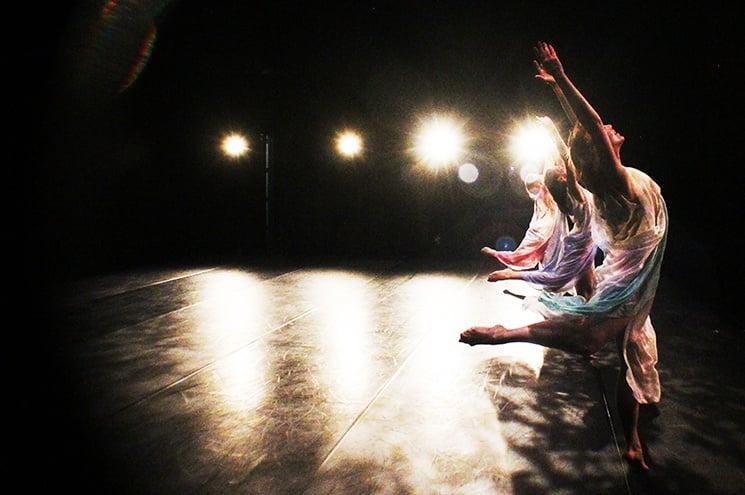
The dancers of the Isadora Duncan Dance Company rehearsing Duncan’s Valse Brillante at the Museum of Contemporary Art Chicago for Modern Women (Photo: Stephen Raskauskas)
Isadora Duncan was, according to Jack Anderson of the New York Times, “the woman who put the Modern into Modern Dance.” To describe her importance and influence in just a few sentences is nearly impossible. Duncan’s works are still performed by Lori Belilove & The Isadora Duncan Dance Company, the resident performing troupe of the Isadora Duncan Dance Foundation. Lori Belilove, who currently leads the Company as Artistic Director, has learned her craft through a direct lineage that goes back to Duncan herself.
WFMT: Why are women often the stars on stage in ballet and modern dance?
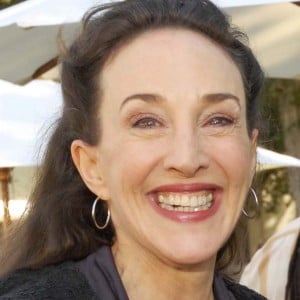
Lori Belilove, Artistic Director of Isadora Duncan Dance Company
Lori Belilove: Maybe because they are beautiful … and very expressive!
WFMT: Why have men historically been the star choreographers, given that women are often the star dancers?
Belilove: Men do like to boss women around and use them as their muses. Men can be very conceptual and have choreographic ideas, and women love to dance. Money for dance often flows through male channels, so men are more often funded and hold the purse strings.
WFMT: Do you perceive any differences between the work of female and male choreographers?
Belilove: Sure — men can have brilliant conceptual ideas, but women can move into incredible subtle expressions and express a vital world view that is needed in this life right now. I think we need more sensitive artists working within the medium of dance, and the world needs to support them. Dance is a tremendous vehicle for human connections and understandings
Janet Eilber, Martha Graham Dance Company
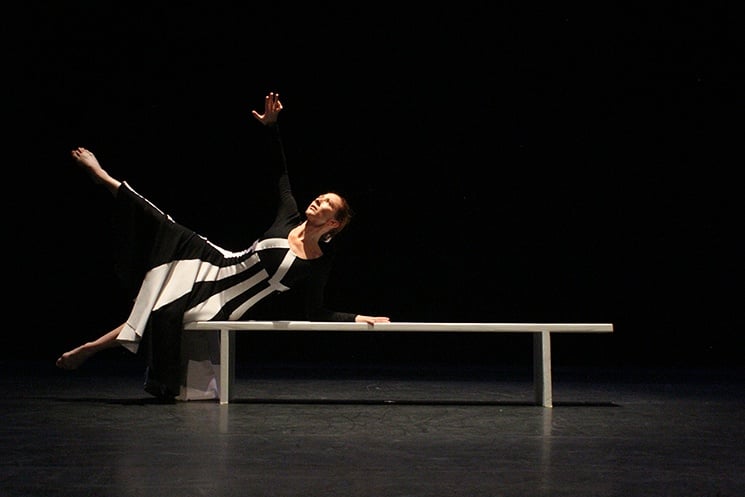
Blakeley White-McGuire, a principal dancer of Martha Graham Dance Company, rehearsing Deep Song at the Museum of Contemporary Art Chicago for Modern Women (Photo: Stephen Raskauskas)
Janet Eilber has what she describes as “one of the greatest jobs in the world,” serving as the Artistic Director for the Martha Graham Dance Company. Martha Graham impacted so many subsequent generations of choreographers including Merce Cunningham, Paul Taylor, and Twyla Tharp. Outside the world of modern dance, everyone from Margot Fonteyn to Mikhail Baryshnikov to Bette Davis to Madonna have all sought the guidance of Martha Graham, the visionary artist and consummate performer. Eilber spoke with me just as she was about to jet off to Jacob’s Pillow where she and the company launch their 90th Anniversary season.
WFMT: Why are women often the star dancers in ballet and modern dance?
Janet Eilber: That’s more true of ballet than modern dance. In ballet, one of the main functions of the man is to support the woman – to do the lifting and to help her balance when they are doing a pas de deux and that sort of thing. That was not so prevalent when modern dance was born. And, of course, modern dance was really born out of a woman’s health movement. So, from the very beginning, the role of gender was different.
WFMT: Why are men often the star choreographers?
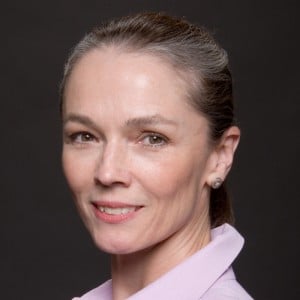
Janet Eilber, Artistic Director of Martha Graham Dance Company (Photo: John Deane)
Eilber: In ballet – which has a longer history – I think sexism came into in the early years. Men were allowed to be in charge. But I also think in more current times, because of the fact that the men’s roles are less nuanced – they are required to do the lifting, and to sort of be in the background in part – perhaps some of today’s choreographers were looking for a more creative outlet.
Martha was a game-changer in every way, shape, and form. She was such a radical thinker in the whole modernist movement. It’s really genderless. She was a genius who had a vision for what she wanted to put on the stage and who set out to realize that vision, and who just changed the game completely.
That being said, of course, her work had a very female slant. Part of her drive was that she wanted to be on stage, and she wanted to create great roles for herself. So, much of the Graham repertoire is centered around strong female characters because that is what interested Martha Graham to put on stage.
WFMT: Martha Graham created many roles inspired by some of history and mythology’s greatest women, can you tell us about some of them?
Eilber: She borrowed from many different cultures and legends to take strong female characters. And of course, she transformed them to give you a modern statement. But everyone from Medea to Joan of Arc… Adam and Eve… Phaedra… Clytemnestra… And Clytemnestra is her full-evening ballet and includes Elektra, Helen of Troy, Cassandra, Iphigenia – the whole Greek gang!
And even a more ensemble piece like Appalachian Spring with the young bride at the center, an iconic American woman! When Martha Graham wrote to Aaron Copland as she was writing a script so that he could compose the music for Appalachian Spring, she described her woman as, ‘what we like to think of when we think of the American woman.’ So she was going for these iconic females.
WFMT: It’s almost strange seeing her act so demure in Appalachian Spring after you’ve seen her play so many other heroines – it’s quite a departure.
Eilber: The critics at the time mentioned this as well. They said it was Martha at her most pastoral, and they thought Aaron Copland had a lot to do with that sort of open-heartedness that we get from Appalachian Spring.
WFMT: Do you perceive any differences between male and female choreographers?
Eilber: I would say thematically, yes. I mean I’ve touched on the fact that Martha wanted to create roles for herself, and because dance is visual and about the body, Martha’s work is about the female body and very often revolved around female issues. The work we’re bringing to Chicago Deep Song from 1937 is an anti-war statement. At the time, Martha was speaking out against the rise of fascism in Europe and the Spanish Civil War in particular. You see this beautiful solo, it’s a lament, it contains anger, frustration. It’s a woman who has lost her husband or son or is considering what happens to her universe because of this war. So, yes! I guess the short answer is yes. When you have a female at the center of the work, it’s naturally geared towards female issues.
Claire Bataille, Hubbard Street Dance Chicago
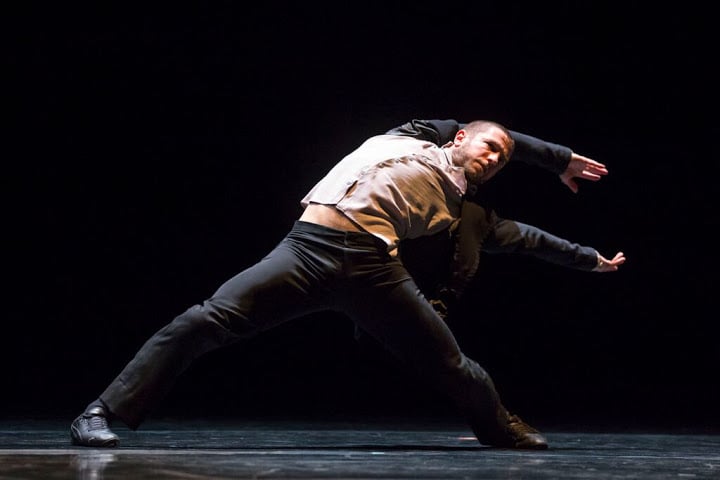
Hubbard Street Dancer Jesse Bechard in A Picture of You Falling by Crystal Pite (Photo: Todd Rosenberg)
Claire Bataille is a founding member of Hubbard Street Dance Chicago and the Director of the Lou Conte Dance Studio. This Ruth Page Award-winning dancer has performed the works of Twyla Tharp, Lynne Taylor-Corbett, and Margo Sappington in her time with Hubbard Street. From 1977-2001 Bataille also served the company as assistant artistic director, ballet mistress, and rehearsal director. She choreographed five works between 1978 and 1985. Here, she reflects on her decades of experience as a woman in dance.
WFMT: Can you tell us your thoughts on women as choreographers and directors?
Claire Bataille: There are certainly more male artistic directors in dance, when it comes to the top-tier companies, although I feel that, in contemporary dance, it’s more evenly split. If you’re a woman who’s a dancer and you want to have a family, that means you’ve got to take a pretty big break, usually in your late thirties. Some go back into the field to pursue work as dance teachers and choreographers; some pursue other paths entirely and go into other careers.

Claire Bataille, Founding member of Hubbard Street Dance Chicago
When I stopped dancing and was trying to pursue a choreographic career, I found that male choreographers were more frequently being hired — similar to in any other occupation. You reach that age when you’re not performing anymore and things change. But gender discrimination is really no different in the dance world from what it is in the corporate world, and I think in a lot of ways it comes back to that simple fact that men don’t have to carry babies.
It seems to me that now, there are more first-tier choreographers who are female, as opposed to in the ’70s. It was just that handful, Twyla and Martha. But when dance in general exploded, there were more ways to put yourself out there. It became easier to do your own projects and start your own company, and I feel there were more women who emerged in dance through that. The younger women I know who went to New York to dance are doing more creative work and their own projects. That’s very different from what it was like 40 years ago.
WFMT: Did you ever feel you were being treated differently as a female choreographer than you would’ve been treated if you were a man?
Bataille: Not that I can recall, although I also never thought I was ‘the next great thing,’ the next Twyla Tharp. I did have more luck finding opportunities in university dance programs — where you do see a lot of women in leadership roles, as opposed to at dance companies; Western Michigan University and the University of Iowa brought me in. I was hired more often by other women than I was by men.
WFMT: Do you perceive any fundamental differences between the work of male and female choreographers?
Bataille: I’ve never really thought about it that way. I don’t think so.
Kate Weare, Kate Weare Company
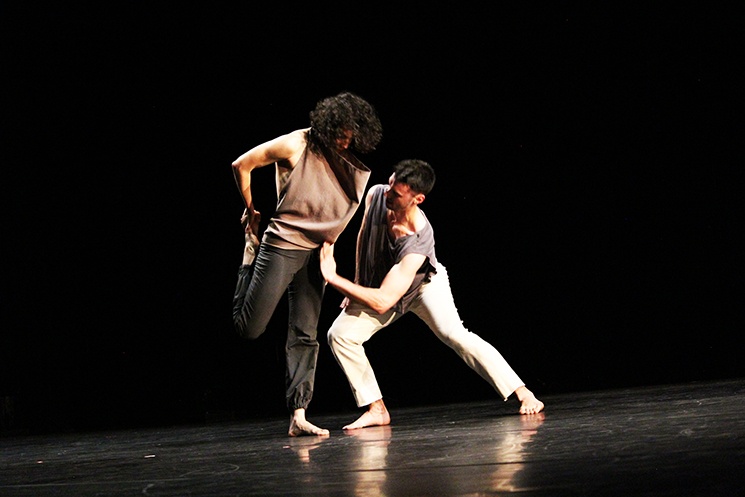
Members of Kate Weare Company rehearse an excerpt from Weare’s Unstruck at the Museum of Contemporary Art Chicago for Modern Women (Photo: Stephen Raskauskas)
Kate Weare is a dancer and choreographer whose company, Kate Weare Company, just celebrated its 10th Anniversary during the 2014-15 season. Though relatively young compared to other arts organizations, the Kate Weare Company has already made its mark on the dance world, having appeared at the Joyce Theater, the Brooklyn Academy of Music, Jacob’s Pillow, and the American Dance Festival. Weare herself has received many awards and honors, including a 2014 Guggenheim Fellowship.
WFMT: Why are women often the stars on stage in ballet and modern dance? Why have men historically been the star choreographers, given that women are often the star dancers?
Kate Weare: It’s a problem to meld together the histories of ballet and modern dance. They are essentially different, often opposed, in terms of cultural values. Rebellious, powerful women first originated modern dance in America and Germany during the 1900s. Modern dance’s roots are in resistance and autonomy for women, and women’s actual experience is at the core of the art form.
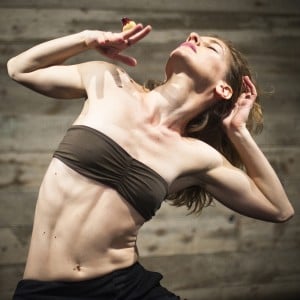
Kate Weare, Artistic Director of Kate Weare Dance
Although it’s true that nowadays contemporary male choreographers rise higher and faster than female ones, the work of both female and male choreographers is informed by modern dance’s unique history of breaking down gender assumptions and barriers.
Ballet is a form that perceives women through a potent lens of fantasy and idealization. The perceiver is male and the object of perception female; that is the tradition and it persists today. You have male choreographers and female stars as the given order of things. However, as a broader acceptance of homosexuality gains ground, male stars themselves and the perception of male beauty as a theme are moving to the forefront.
WFMT: Do you perceive any differences between the work of female and male choreographers?
Weare: Yes, just as one perceives differences between men and women in the real world. Those issues are reflected in the work of artists, but one would be hard-pressed to accurately generalize about them. The reason is this; modern dance as a tradition delves into the psyche of the individual as a means toward broadly-felt experience, presaging the feminist message “the personal is political.” The unique qualities of the individual – originality, idiosyncrasy, outsiderness – are prized in this form. So I think that the voices that persist in modern dance, both male and female, tend to be ones that resist simple assumptions or easy categorization. That’s part of what makes modern dance so challenging, and ultimately, such an exciting reflection of our complex lives and identities.
Pam Tanowitz, Pam Tanowitz Dance
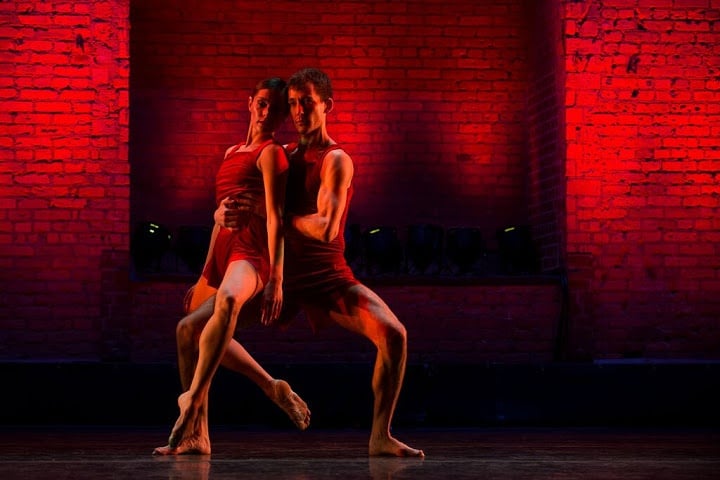
Pam Tanowitz Dance in Heaven on One’s Head (Photo: Christopher Duggan)
Pam Tanowitz is a dancer and choreographer who founded her own company, Pam Tanowitz Dance, in 2000. Since, Pam Tanowitz Dance has performed at Jacob’s Pillow Dance Festival, at the Joyce SoHo, the Baryshnikov Arts Center, and other prestigious venues. Tanowitz herself was the recipient of a Guggenheim Fellowship in 2011 and was Hodder Fellow at Princeton University in 2013-14. She has served on the faculty for the American Ballet Theater, ABT/Bermuda and has taught master classes at Hunter College, American Dance Festival, Sarah Lawrence College and Greenwich Academy. She and I spoke during her rehearsals for Modern Women at the Chicago Dancing Festival.
WFMT: Tell us about your experiences as a choreographer who is also a woman.
Pam Tanowitz: For me, it’s all about the work, right? Of course, I know that I’m a woman and I’m making work. But the themes that I work with are things that I think are important to dance and dance history. I’m a female choreographer trying to make interesting dance in 2015. At the same time, I feel like it is hard for women because people are more apt to cultivate male choreographers, to give multiple chances to choreograph their work, and to give them opportunities for their work to grow.
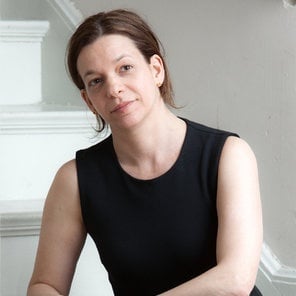
Pam Tanowitz, Artistic Director of Pam Tanowitz Dance
I do not feel that’s the same for women. Someone might hire a female choreographer and if something didn’t go exactly how they wanted, or they have a different idea of how to gauge a work’s success, they might not hire another female choreographer for another 10 years. There are multiple chances for men to grow there work.
WFMT: Can you tell us about how you have created your own opportunities?
Tanowitz: I’ve been choreographing for about 25 years. I came to New York, and I didn’t wait around for someone to give me opportunities. I performed in CBGB‘s gallery, and I had to go around and physically pull out nails from the stage that were sticking up, and I put up a show. I don’t do that anymore. But I’m grateful that I had to do that, and for all the opportunities I’ve gotten recently. Maybe other people don’t have quite as many opportunities to do that now. I don’t know what to say about that…
There are so many more female choreographers than there are programed during a given season. If you look at a season brochure, you might see 3 female choreographers and 3 male choreographers and think that’s an even number. But, that’s not true – it’s not proportionate to how many women are actually in dance. It should be 5 women and 1 male choreographer on a brochure. That would be maybe correct.
WFMT: What would you say to young women who want to create opportunities for themselves?
Tanowitz: When I was younger in my 20s, there were a lot of opportunities that I don’t think are available anymore. Things are more expensive… there’s a lot of stuff that’s different. I used to just work with my friends and I wouldn’t pay them anything. I don’t know if people really do that anymore. It’s really hard. I think what’s always been really important to me is pushing myself, making sure I stay true to the dance and the work that I’m making.
You have to be in it for the long haul. I’ve been making work for the last 25 years, but I’ve only been getting attention for the last 5, okay? So you have to love it. You have to be committed to it. You have to determine what you want your work to be, and hopefully, the community and the critics will come. But you can’t expect things to come to you unless you’re in for the long haul. I can tell you my path about how I got certain opportunities to show my work, but it’s going to be different for everyone.


